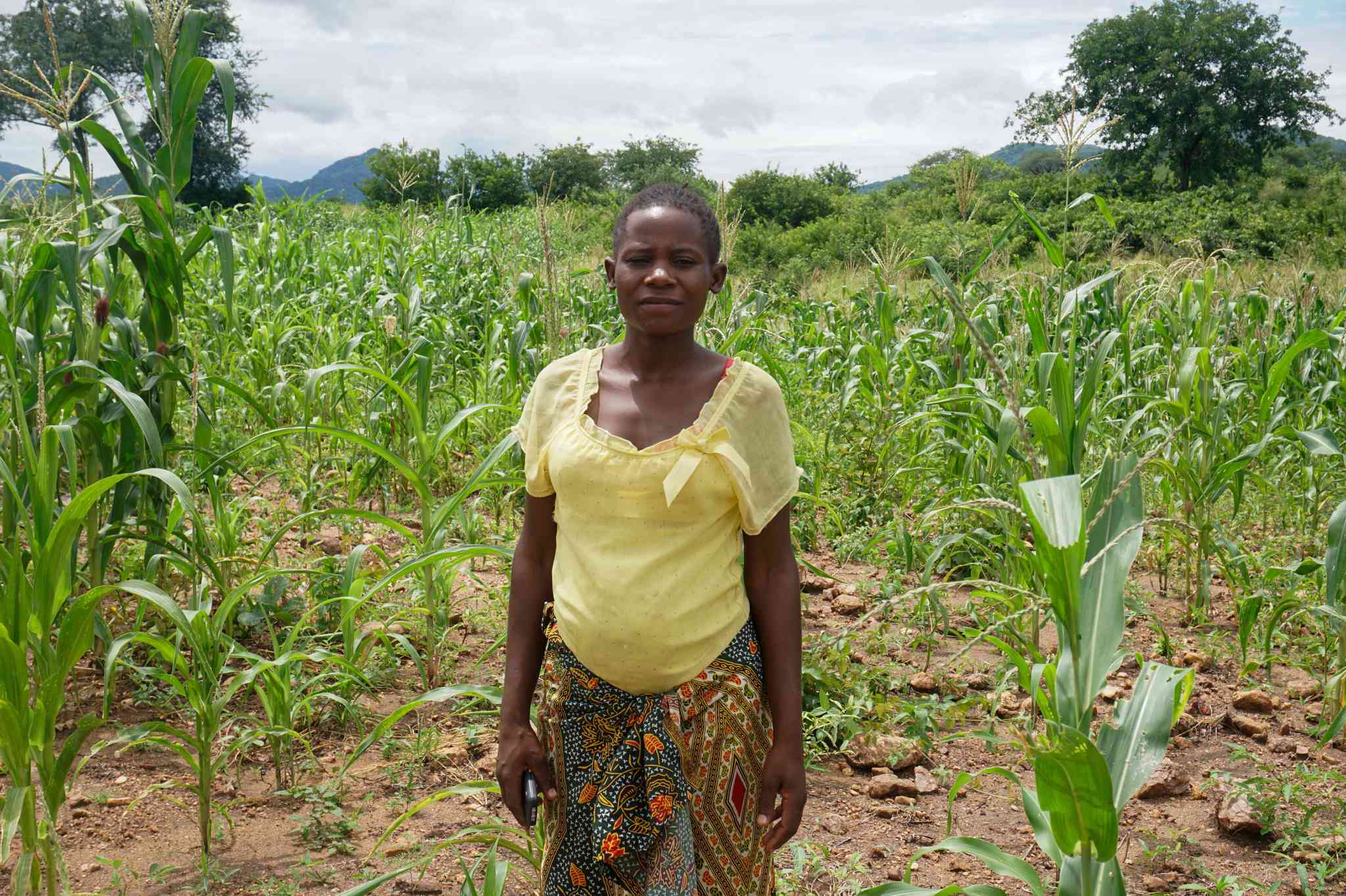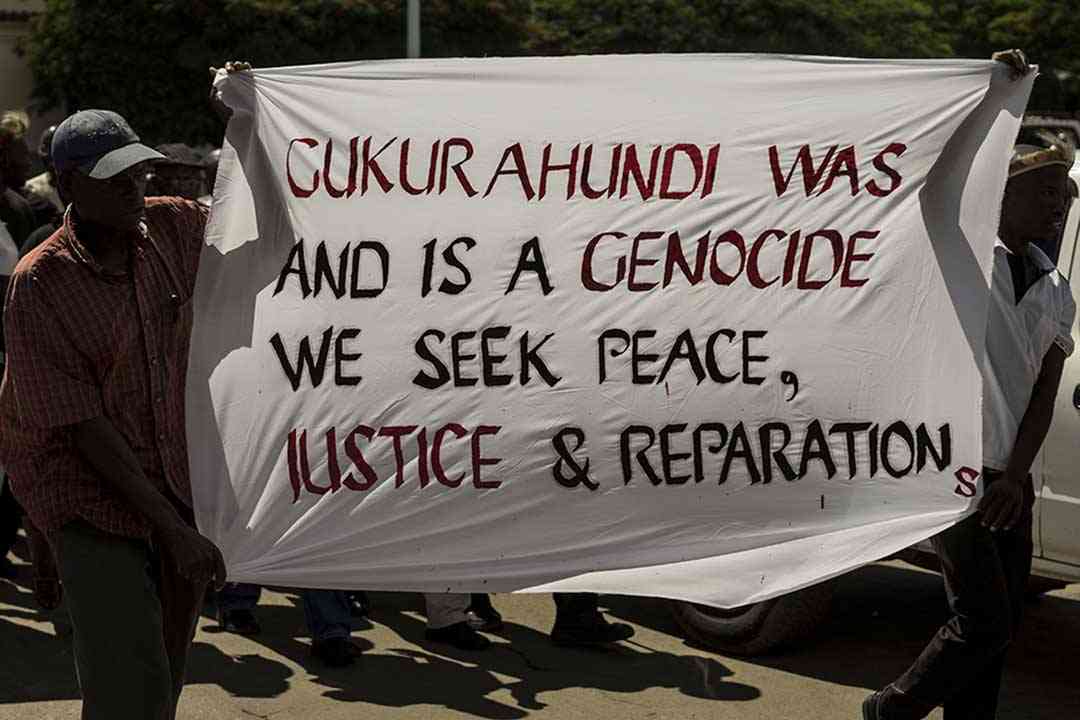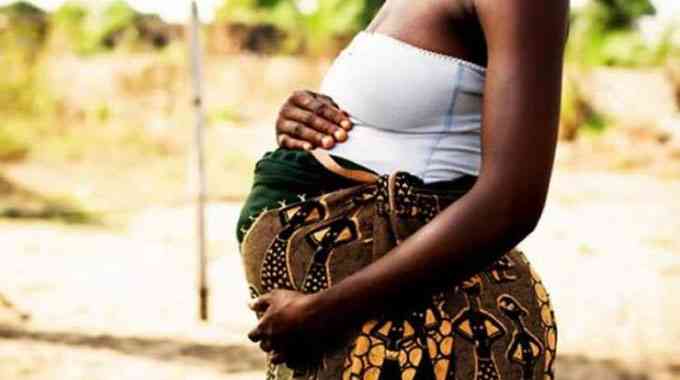
HARARE, ZIMBABWE — Agnes Tauzeni stands on her parched field. She is a mother to two children, and is expecting another. But now, in a time that might otherwise have been joyful, her hopes wither like the struggling crops before her.
Three times she’s gambled on the rains; three times the sky has betrayed her. Her first two plantings failed. The soil was too dry to sustain life. Though her third attempt yielded a few weak shoots, they offered little promise of a meaningful harvest. El Niño-driven droughts have disrupted once-reliable rains, leaving Tauzeni’s family and many like hers struggling to feed themselves.

“I am always hungry,” Tauzeni says.
She worries about the health of her unborn child, based on how little nutrition she consumes herself.
Adding to this, food aid, previously funded by the US Agency for International Development, halted suddenly in January. That transformed what was already a struggle into a desperate battle for survival.
The food aid ended when US President Donald Trump, on his first day in office, issued an executive order that paused nearly all US foreign aid, most of which was administered by USAID. That agency is now all but defunct.

- HCC considers cancelling ZimPhos contract
- Zim hit by grain shortage
- Masvingo teen stars in human wildlife ‘Konflict’ film
- More action needed to stem child marriages
Keep Reading
Food aid in Zimbabwe was an ongoing area of funding for USAID. In November 2024, the agency announced $130 million for two seven-year programs, implemented by CARE and Cultivating New Frontiers in Agriculture, that would provide food aid and other related support to areas of Zimbabwe most in need. The programs, which stopped, were just part of an ongoing slate of activities designed to help Zimbabwe’s neediest people.
About 7.6 million people in Zimbabwe — nearly half the country’s population — need humanitarian assistance, according to a 2025 UNICEF report. Of those, nearly 6 million, like Tauzeni, rely on subsistence farming.

Through the support of organizations with funding from USAID, people previously received cereals, edible seeds, oil and food vouchers.
“A sudden withdrawal can put the entire community in a dire situation,” says Hilton Mbozi, a seed systems and climate change expert.
Tauzeni recalls that her community used to receive food supplies such as beans, cooking oil and peanut butter to help combat malnutrition.
When Tauzeni got married in 2017, her fields promised abundance. Her harvests were plentiful, and her family never lacked food. Now, those memories feel like whispers from another world. The past two agricultural seasons, those harvests have been devastatingly poor.
With an empty granary and dwindling options, Tauzeni’s family survives on the same food every day: baobab porridge in the morning and sadza with wild okra in the evening. But Tauzeni worries whether even this will be on the table in the coming months.
“The little maize I have, I got after weeding someone else’s crops, but that won’t take us far,” she says.
Tauzeni says a 20-kilogram (44-pound) bag of maize costs US$13 in her village, an amount out of reach for her. Her only source of income is farming. When that fails, she has no money at all.
Hunger like Tauzeni experiences is widespread. Some families now eat just once a day.
Headman David Musau, leader of Musau village where Tauzeni lives, says some people in his village did not plant any seeds this season, fearing losses due to the low rainfall. The government provides food aid inconsistently, usually 7 kilograms (15 pounds) of wheat per person for three months.
“It’s not enough, but it helps,” he says.
But without any other food aid, survival is at stake, he says. “People will die in the near future.”
- This story was originally published by Global Press Journal.










